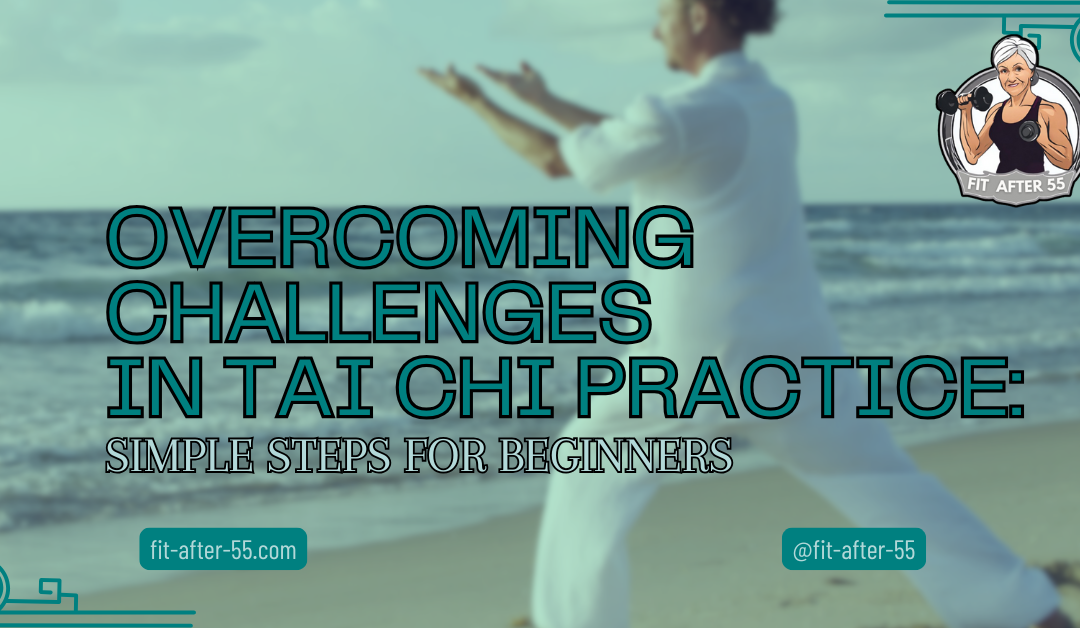Starting your Tai Chi journey can feel a bit challenging at first, especially if you’re new to the graceful movements and flow of this ancient practice. But don’t worry—everyone starts somewhere! Whether it’s finding your balance, learning to relax, or simply keeping up with the steps, the key is to take it one move at a time. In this guide, we’ll cover some simple ways to overcome common challenges beginners face in Tai Chi, so you can focus on enjoying the process and reaping the benefits of this calming, low-impact exercise. Ready to get started? Let’s go!
Overcoming Challenges in Tai Chi Practice: Simple Steps for Beginners
Tai Chi offers a path to better health and well-being, but it’s not always easy. Many people face hurdles when starting or keeping up their practice. You might struggle with balance, feel confused by the movements, or find it hard to stay focused.

By sticking with it and using some simple strategies, you can overcome these challenges and enjoy the full benefits of Tai Chi. Regular practice can help you improve balance, flexibility, and strength. It can also reduce stress and boost your mental health.
Don’t worry if you find Tai Chi tough at first. It’s normal to face some bumps along the way. With time and patience, you’ll get better. Remember, Tai Chi is about your own journey. You’re not competing with anyone else.
Take it one step at a time, and you’ll soon see progress in your practice and your life.
Key Takeaways
- Tai Chi can boost your physical and mental health with regular practice.
- You can beat common challenges by staying patient and using helpful tips.
- Tai Chi is for everyone, and you can adapt it to fit your needs and abilities.
Understanding Tai Chi
Tai Chi blends gentle movements with mindfulness. You’ll find it improves your balance and brings harmony to your life.
The Philosophy Behind Tai Chi
Tai Chi is more than exercise. It’s a way of life rooted in ancient Chinese wisdom. The practice aims to balance your yin and yang energies. This creates harmony in your body and mind. You’ll learn to move with grace and purpose. Each motion has meaning. As you practice, you’ll become more aware of your body and breath. This mindfulness spills into your daily life.
Tai Chi teaches you to go with the flow. You’ll learn to be flexible, both physically and mentally. This can help you deal with stress better.
Basic Tai Chi Movements
Tai Chi movements are slow and fluid. They mimic nature, like clouds moving or water flowing. You’ll start with simple steps and build up to more complex forms. A key move is “Wave Hands Like Clouds.” You’ll sweep your arms smoothly from side to side. This improves your balance and focus.
Another important move is “Grasp the Bird’s Tail.” It teaches you to shift your weight and turn your body. This helps with coordination. Remember, there’s no rush. Take your time to learn each move. With practice, they’ll become natural to you.
Health Benefits of Tai Chi
Tai chi offers many health perks for your mind and body. This ancient practice can boost your well-being in several ways.
Mental and Emotional Advantages
Tai chi can help you feel calmer and more at peace. As you make the slow, flowing moves, your stress may melt away. Many people find that tai chi reduces anxiety and depression. Tai chi can sharpen your focus too. The mindful nature of the practice trains your brain to stay in the present moment. This can improve your mental clarity and memory.
You might sleep better after starting tai chi. The gentle exercise and deep breathing can help you relax, leading to more restful nights.
Physical Health Rewards
Your balance and stability can get better with tai chi. The careful movements strengthen your legs and core. This may lower your risk of falls, which is great news if you’re older. Tai chi can ease joint pain and stiffness. It’s gentle on your body but still gives you a good workout. People with arthritis often find relief through tai chi.
Your heart health may improve too. Tai chi can lower your blood pressure and boost your cardiovascular fitness. It’s a safe way to get moving if you have heart issues. Tai chi might even help your immune system. Some studies show it can make your body better at fighting off germs.
Getting Started with Tai Chi
Tai Chi offers many benefits, but starting can feel overwhelming. Picking the right style and setting goals will help you begin your practice smoothly.
Choosing the Right Tai Chi Style
When you start Tai Chi, pick a style that fits your needs. The main styles are Yang, Chen, Wu, and Sun. Yang is the most common and good for beginners. Look for classes near you. Try a few to see what feels right. Ask questions in your first class to understand the basics.
Think about your goals. Do you want to improve balance, reduce stress, or get more active? Different styles focus on different things. Don’t worry about being perfect at first. Tai Chi is about steady progress, not instant results.
Setting Clear Goals
Set clear goals for your Tai Chi practice. This will keep you motivated and help you track your progress. Start small. Aim to practice for 10-15 minutes a day. As you get better, you can do more.
Write down what you want to achieve. Maybe you want to improve your balance or reduce stress. Having clear goals helps you stay focused. Be patient with yourself. Tai Chi takes time to learn. Celebrate small wins along the way.
Find a buddy or join a group. Having support makes it easier to stick to your goals.
Common Challenges in Tai Chi Practice
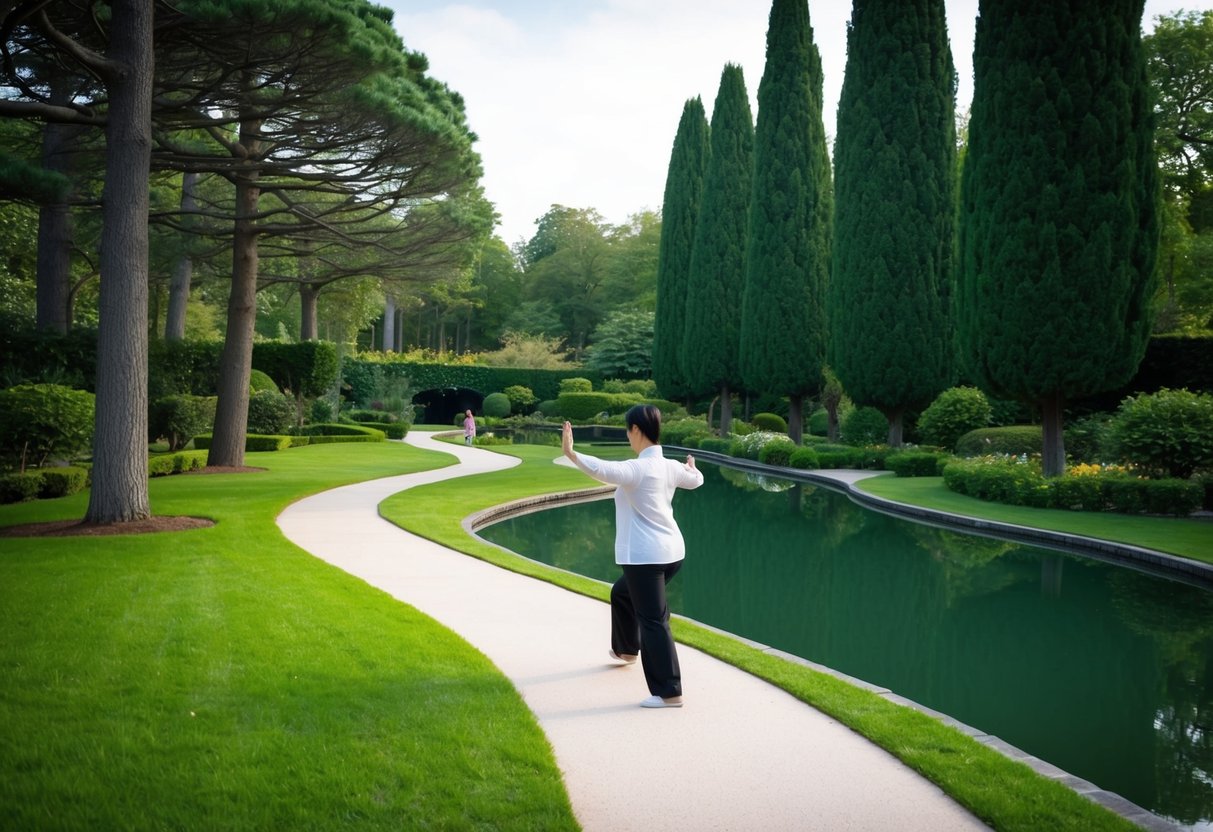
Tai Chi can be tricky to learn at first. You might face some hurdles as you start your practice. Let’s look at two main types of challenges you may come across.
Physical Limitations and Disabilities
You might worry that physical issues will stop you from doing Tai Chi. But don’t give up! Many people with different abilities practice Tai Chi. Here are some common physical challenges:
- Balance problems
- Limited mobility
- Chronic pain
- Weakness
You can adapt Tai Chi moves to fit your needs. Try sitting in Tai Chi if standing is hard. Go slow and listen to your body. Don’t push too hard. Talk to your doctor before you start. They can help you find safe ways to practice. Remember, Tai Chi is gentle and can help improve your health over time.
Overcoming Mental Obstacles
Your mind can create barriers too. You might feel:
- Shy about trying something new
- Worried about looking silly
- Unsure if you’re doing it right
- Frustrated when you can’t get a move
Don’t let these thoughts stop you! Everyone starts as a beginner. Self-discipline and time management can be tricky. But they get easier with practice. Try to stay patient. Focus on how Tai Chi makes you feel, not how you look. Join a class for support. Or practice at home if that feels better. Remember, Tai Chi is about your journey, not perfection.
Tai Chi for Different Age Groups
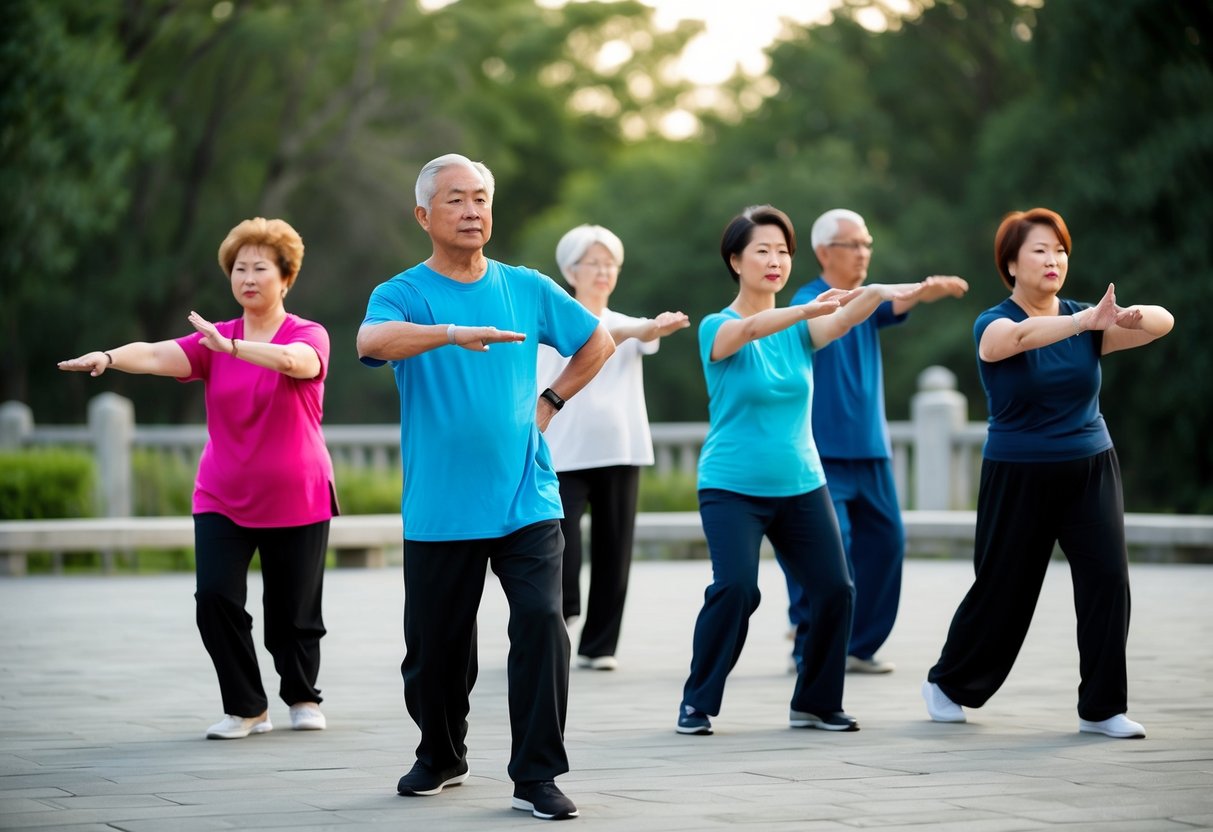
Tai Chi offers unique benefits for people of all ages. It can be adapted to suit different physical abilities and goals.
Benefits for Older Adults
Tai Chi is great for older adults. It helps improve balance and reduces fall risk. You’ll find it boosts your strength and flexibility too. Tai Chi can lift your mood and ease stress. It may even help with memory and focus. Many seniors enjoy the social aspect of group classes.
You don’t need special equipment to practice. Just wear comfy clothes and shoes. Start slow and build up over time. Your instructor can modify moves if needed.
Tai Chi in the Education System
Schools are starting to add Tai Chi to their programs. It helps students manage stress and improve focus. Kids learn body awareness and coordination. Tai Chi teaches them to breathe deeply and stay calm.
You might see Tai Chi in PE classes or as an after-school activity. Some schools use it as a quick “brain break” during the day. Teachers report better behavior and attention in class. Students say they feel more relaxed and ready to learn.
Tai Chi is fun for kids. They enjoy the flowing movements and martial arts connection.
Integrating Tai Chi into Daily Life
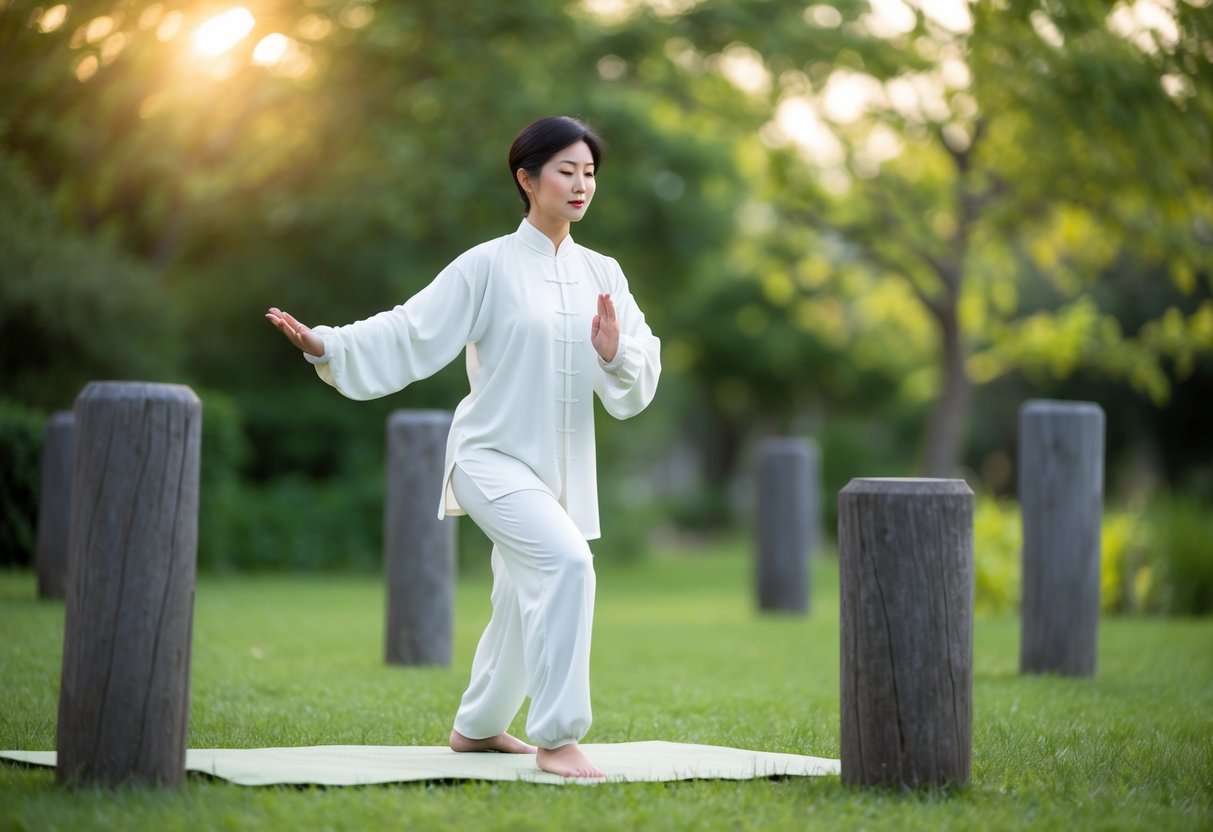
Tai Chi can become a natural part of your everyday routine. By focusing on mindful breathing and creating a consistent practice schedule, you’ll soon feel the benefits of this ancient art in all aspects of your life.
Mindful Breathing and Meditation
Start your day with mindful breathing exercises. Take a few deep breaths, focusing on the air moving in and out of your lungs. This simple practice can help you feel centered and calm.
Try this quick meditation:
- Sit comfortably
- Close your eyes
- Breathe deeply for 5 minutes
As you get better at mindful breathing, you can do it anytime, anywhere. Waiting in line? Take a few deep breaths. Feeling stressed at work? Pause for a moment of calm breathing.
Combining breathing with gentle Tai Chi movements can boost your energy and mood. Try doing a few slow arm circles while focusing on your breath. You’ll feel more relaxed and ready to face the day.
Creating a Daily Tai Chi Routine
Making Tai Chi a daily habit doesn’t have to be hard. Start small – even 5-10 minutes a day can make a big difference.
Pick a time that works for you:
- Early morning to start your day right
- Lunch break to refresh your mind
- Evening to unwind after work
Try setting a reminder on your phone to practice at the same time each day. Consistency is key! You can also break up your practice throughout the day. Do a few moves while waiting for your coffee to brew or during TV commercials. Every little bit counts! Remember, Tai Chi is flexible. You can adapt it to fit your lifestyle and needs. The most important thing is to keep practicing and enjoy the journey.
Advanced Tai Chi Training Techniques
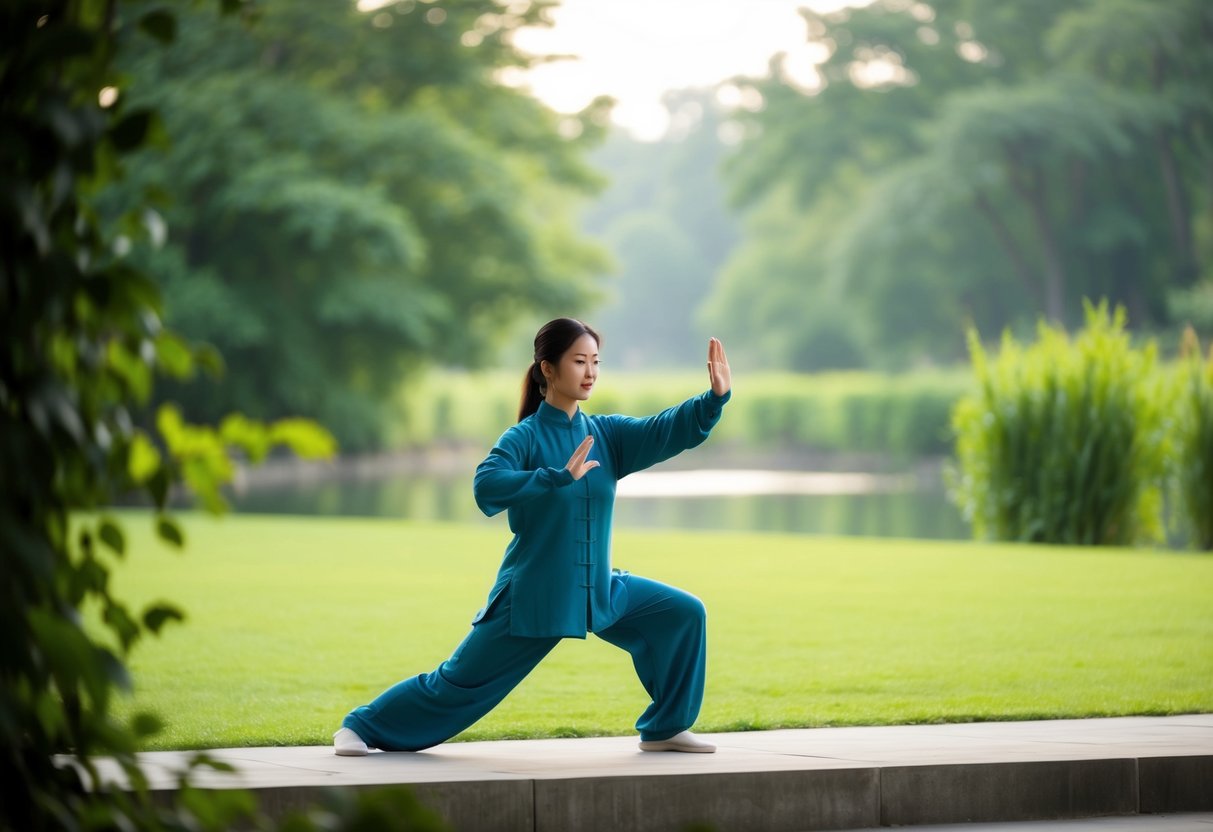
As you progress in your Tai Chi journey, you’ll discover new ways to deepen your practice. These advanced techniques will help you build strength and expand your understanding of Tai Chi principles.
Mastering Tai Chi Exercises
To take your Tai Chi skills to the next level, focus on refining your form. Pay close attention to your posture and alignment in each movement. Try practicing your forms very slowly to improve balance and control.
Silk reeling exercises can help you develop smooth, continuous motion. These repetitive movements work both sides of your body equally. Challenge yourself with longer, more complex forms. The Yang-style 108-move long form is a popular choice for advanced practitioners.
Incorporate standing practice into your routine. This helps build leg strength and improves your rooting. Try practicing outdoors in different weather conditions. This will test your focus and adaptability.
Expanding Knowledge Through Qigong
Qigong exercises can enhance your Tai Chi practice by improving your energy flow and body awareness. Start with simple breathing exercises to develop your diaphragmatic breathing. Learn the Eight Pieces of Brocade or Baduanjin, a popular Qigong set that complements Tai Chi nicely. These exercises focus on different aspects of health and energy cultivation.
Explore meditation techniques to deepen your mind-body connection. Try seated meditation or walking meditation to start. Qualified instructors can help ensure you’re learning proper techniques. Look for workshops or retreats to immerse yourself in Qigong practices. Remember, patience is key. Advanced techniques take time to master, so be kind to yourself as you learn.
Finding Support and Resources

Connecting with others and using technology can boost your Tai Chi journey. These tools help you learn, stay motivated, and overcome hurdles in your practice.
Joining a Tai Chi Community
Local Tai Chi groups offer a great way to learn and grow. You can find classes at community centers, parks, or gyms. These groups give you a chance to practice with others and get tips from more experienced students.
Look for Tai Chi meetups in your area. You’ll meet people who share your interests and can offer support. Many groups welcome beginners and are happy to help you learn the basic movements. Don’t be shy about asking questions. Other students and teachers can give you advice on tricky Tai Chi movements. They might share tips on how to relax or improve your balance.
Utilizing Digital Platforms and Apps
Online resources can help you practice Tai Chi at home. YouTube has many free Tai Chi videos for all skill levels. You can follow along and learn new moves at your own pace. Tai Chi apps offer guided practices and track your progress. Some popular options include:
- Tai Chi for Beginners
- Simply Tai Chi
- Daily Tai Chi
These apps often have forums where you can chat with other users. You can share your challenges and get advice from people around the world. Social support from online communities can keep you motivated. Join Tai Chi groups on Facebook or Reddit to connect with fellow practitioners.
Leveraging Tai Chi to Overcome Adversity
Tai Chi offers powerful tools to face life’s challenges. It can help you build inner strength and find opportunities in tough times.
Tai Chi as a Tool for Resilience
Tai Chi can boost your ability to bounce back from hard times. When you practice Tai Chi, you learn to stay calm and focused. This skill helps you handle stress better in daily life. The slow, flowing moves of Tai Chi teach you to be patient. You learn to take things one step at a time. This mindset is useful when dealing with big problems.
Tai Chi also builds physical strength and balance. These qualities can make you feel more confident. When you’re stronger, you might find it easier to face challenges.
Embracing Adversity as Opportunity
Tai Chi can change how you see tough situations. Instead of feeling stuck, you might start to see chances for growth. The practice of Tai Chi helps you stay present. This can stop you from worrying too much about the future. When you’re focused on the now, it’s easier to spot new options.
Tai Chi teaches you to be flexible, both in body and mind. This flexibility can help you adapt to change more easily. You might find creative solutions you didn’t see before.
Enhancing Practice with Complementary Activities

Adding extra elements to your Tai Chi routine can boost your skills and enjoyment. These simple additions can make a big difference in your practice.
Incorporating Music into Your Routine
Music can make your Tai Chi practice more fun and effective. Studies show that adding music to Tai Chi can help older adults stick with it. You might find slow, calming tunes work best. Try different types of music to see what feels right. Some people like nature sounds, while others prefer soft instrumental pieces. The key is to pick music that helps you focus and relax.
You can also use music to set the pace of your movements. This can help you move more smoothly and stay in rhythm. Just make sure the tempo matches your Tai Chi style.
The Role of Present-Moment Awareness
Being fully aware during Tai Chi can really improve your practice. This means paying close attention to your body and breathing as you move. Start by noticing how your feet connect with the ground. Feel each shift in your weight as you go through the forms. Pay attention to your breathing and try to make it slow and steady.
As you practice, your mind might wander. That’s okay! Just gently bring your focus back to your movements. This kind of awareness can help you get more health benefits from Tai Chi, like better balance and less stress.
Try setting a small goal each time you practice. Maybe focus on one part of a form or on keeping your breathing steady. This can help you stay present and improve your skills.
Evidence-Based Approach to Tai Chi

Tai Chi has been studied using scientific methods to measure its effects. Research shows it can help with balance, stress, and worries. Let’s look at how scientists study Tai Chi and what they’ve found.
Understanding Randomized Controlled Trials
Randomized controlled trials (RCTs) are key to studying Tai Chi. In these tests, people are put into groups by chance. One group does Tai Chi, while others might do something else or nothing at all.
RCTs help show if Tai Chi really works. They try to remove things that might change the results. This makes the findings more trustworthy. You can feel good knowing that when a study says Tai Chi helps, it’s based on solid proof. These trials have shown Tai Chi can improve your balance and lower your stress.
Analyzing Scientific Studies on Tai Chi
Scientists have done many studies on Tai Chi. They look at how it affects your body and mind. Research shows Tai Chi can help with many health issues.
Some key findings:
- Tai Chi can make you less likely to fall
- It can help ease your worries and stress
- It might improve your sleep and mood
When you read about Tai Chi benefits, check if they come from good studies. Look for RCTs that used many people. This helps make sure the results are true for most people. Remember, Tai Chi might work differently for each person. But science gives us a good idea of how it can help you.
Fun Fact
Did you know that slow is strong? In Tai Chi, moving at a slower pace actually helps you develop both strength and balance. Each controlled, deliberate movement engages your muscles more deeply, improving stability and coordination. So even if it feels like you’re gliding in slow motion, you’re still getting a surprisingly effective full-body workout!
A Beginner’s Guide to Tai Chi Success
As you continue your Tai Chi practice, remember that progress comes with patience and consistency. Overcoming challenges like balance, coordination, and relaxation is all part of the journey, and each step forward brings you closer to mastering this mindful art.
By breaking down the movements, staying focused on your breathing, and practicing regularly, you’ll gradually build confidence and see improvement. Most importantly, enjoy the process—Tai Chi is about finding peace and balance, both in body and mind. Keep practicing, and soon those early challenges will feel like stepping stones on your path to success!
Facing challenges in your Tai Chi practice? Share your experiences and tips with our community. Let’s inspire each other to overcome obstacles and continue our journey towards mastery.
Frequently Asked Questions

Tai Chi practice comes with its own set of challenges and questions. Learning new movements, remembering sequences, and dealing with physical discomfort are common concerns for many practitioners.
How can beginners effectively progress in Tai Chi practice?
Start slow and be patient with yourself. Focus on mastering basic stances and movements before moving on to more complex forms. Regular practice is key – aim for at least 3-5 sessions per week. Try breaking down the forms into smaller, manageable parts. Practice each section separately before putting them together. This approach can make learning less overwhelming.
What are some techniques to help remember Tai Chi movements?
Visualization can be a powerful tool. Imagine yourself performing the movements even when you’re not practicing. This mental rehearsal can help reinforce the sequences in your mind. Use mnemonics or create stories to associate with different movements. This can make remembering the order easier and more enjoyable.
Can practicing Tai Chi lead to muscle soreness, and how can one alleviate it?
Yes, you might experience some muscle soreness, especially when starting out. This is normal as your body adjusts to new movements and postures. To alleviate soreness, try gentle stretching after practice. Applying heat or taking a warm bath can also help relax tense muscles. Remember to stay hydrated and give your body time to rest between sessions.
What might make Tai Chi seem difficult and how can one simplify the learning process?
Tai Chi can seem complex due to its flowing movements and emphasis on proper form. The Chinese terminology used in some classes might also be confusing for beginners.
To simplify learning, focus on one movement at a time. Don’t worry about perfecting everything at once. Ask your instructor for clarification when needed. Many schools offer beginner-friendly classes that break down the basics.
What are common disadvantages or challenges faced in Tai Chi and how can they be addressed?
One challenge is the time commitment required to see significant benefits. Be patient and set realistic goals for your practice.
Some people find the slow pace frustrating at first. Remember that the slowness is intentional and helps develop body awareness and control. Stick with it, and you’ll likely come to appreciate the meditative quality of the movements.
Is it normal to feel unwell after practicing Tai Chi and what steps can be taken to prevent this?
Some people might feel dizzy or lightheaded after Tai Chi, especially when starting out. This could be due to changes in breathing patterns or blood flow.
To prevent this, make sure you’re well-hydrated before practice. Also, pay attention to your breathing and avoid holding your breath during movements. If you feel unwell, take a break and sit down. Always inform your instructor if you experience any unusual symptoms.
Get Active and Feel Great!
Looking for some fitness motivation? Check out our Facebook page and website for a wealth of tips, tricks, and workout routines tailored for those 55 and older. Join our vibrant community and discover fun ways to stay active, healthy, and energized.
Let’s get fit together!

